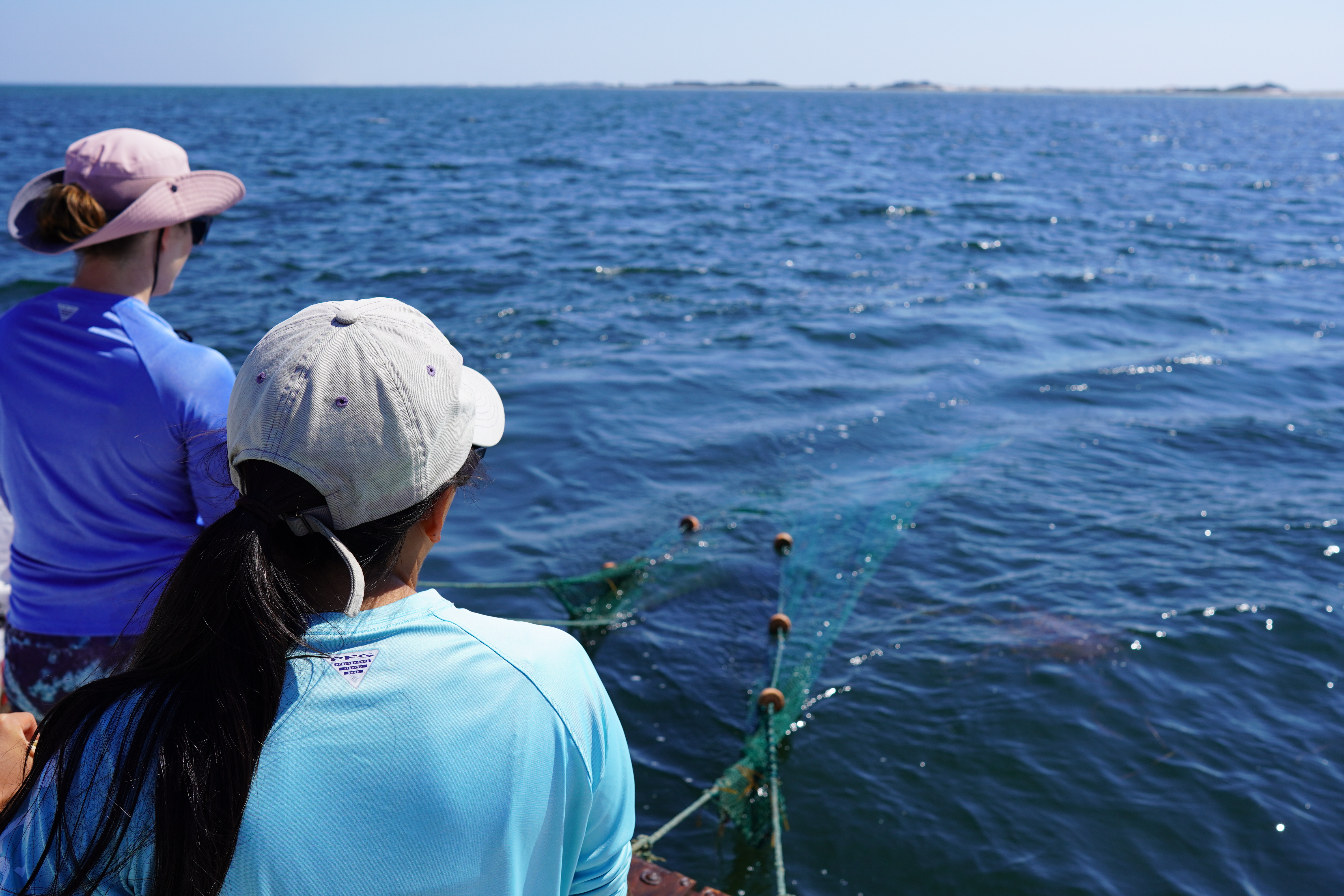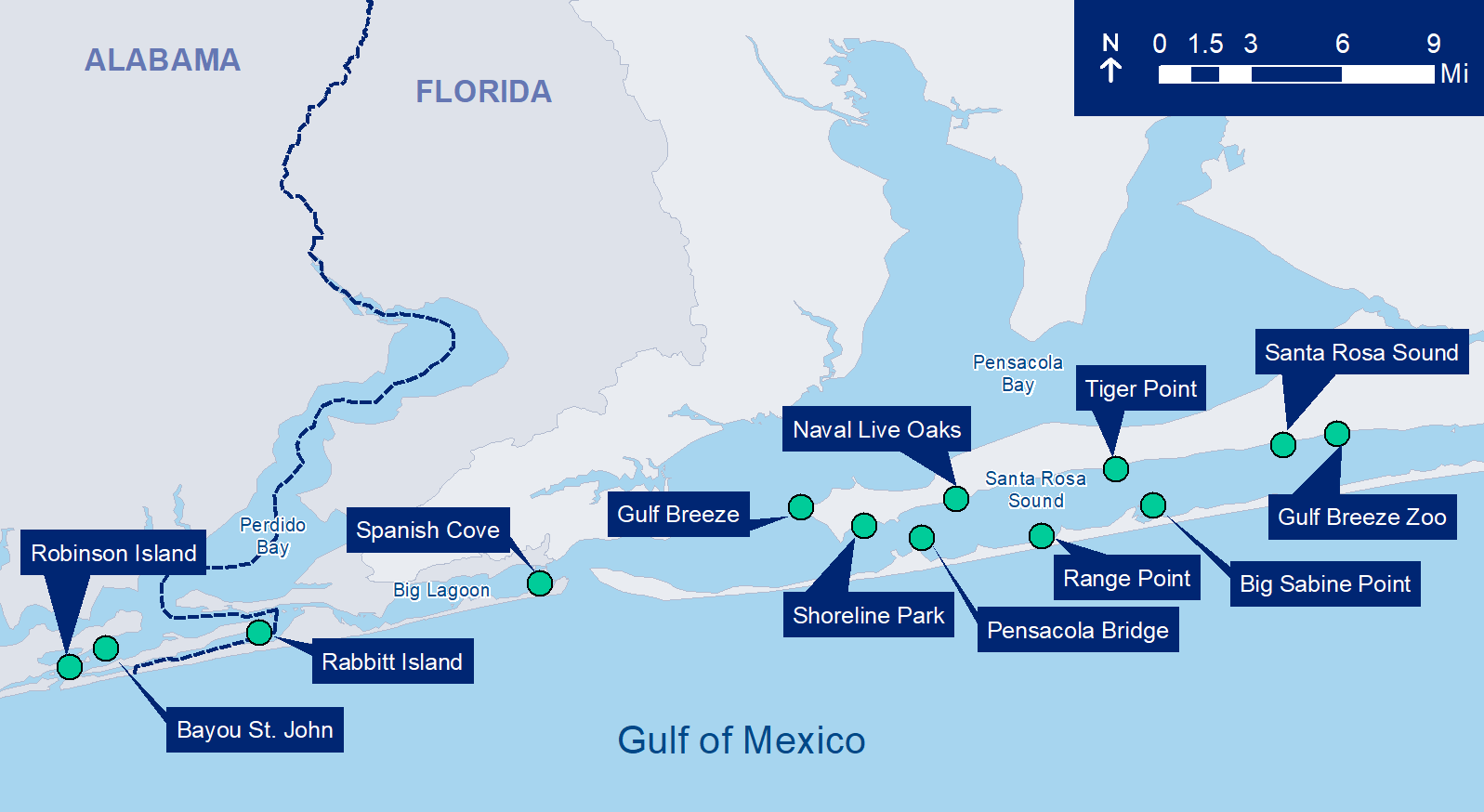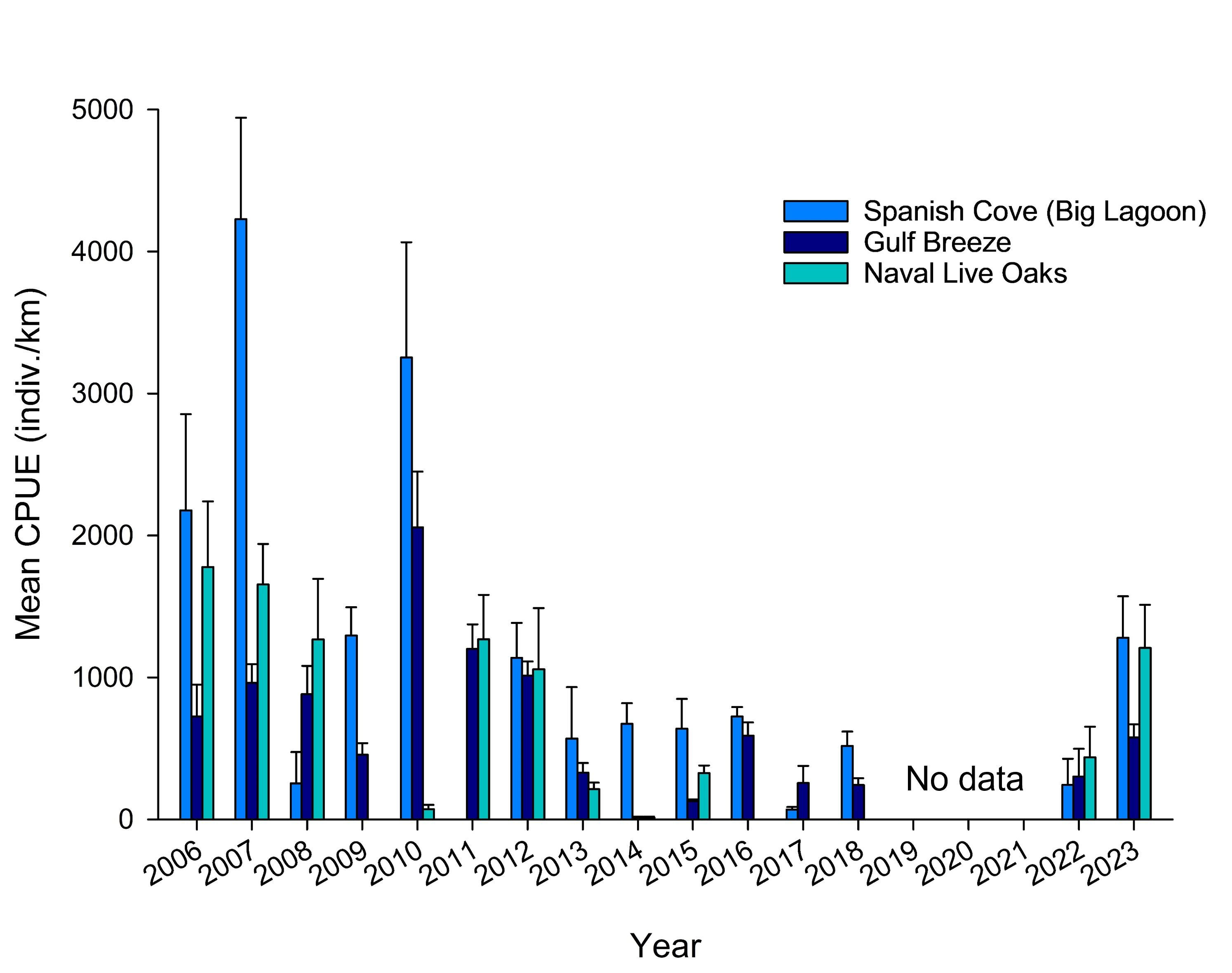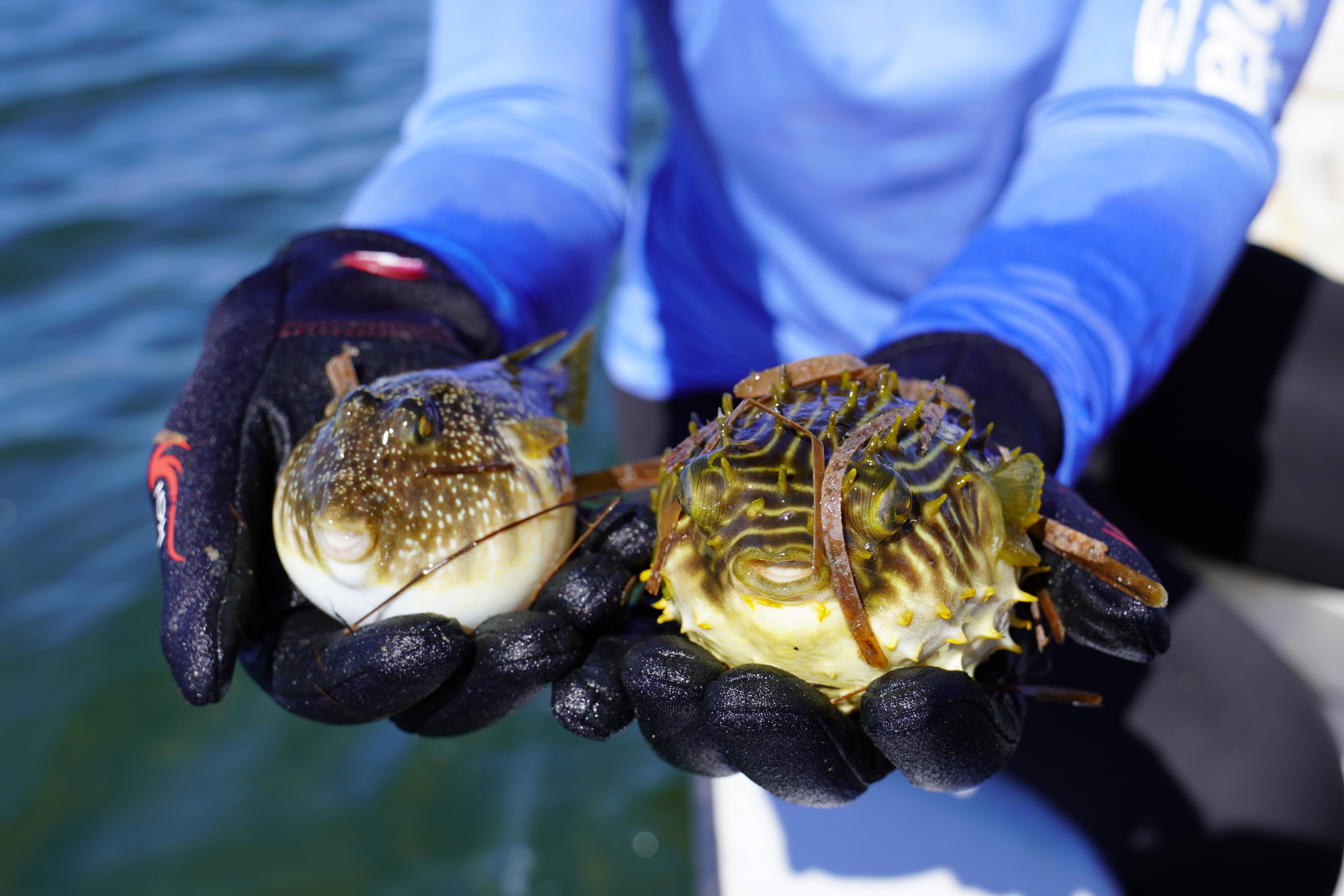


Funding: PPBEP EPA Grant $15,000 (2022); Florida State Appropriation $14,881 (2023)
Years: Reoccurring annually, 2022 - present
Partner Lead: Dauphin Island Sea Lab
Seagrass beds serve as critical nurseries for many species of fish that provide food and shelter from predators. Popular sport fish (e.g., Gray Snapper and Gag Grouper) spend their early lives in seagrass habitats when they are small before moving offshore as they get older and larger. Some species are lifelong seagrass residents (e.g., Red Drum, Speckled Trout, and Gulf Flounder).
It is important to monitor seagrass and fish communities consistently to track changes over time which we can use to inform future condition assessments of our bays and inform important management decisions. Researchers have been surveying our bays since the early 2000s with a historical dataset dating back to the 1970s.

2022 Map of Trawling Locations
To assess the fish communities within seagrass beds across Pensacola and Perdido Bay Systems, PPBEP partnered with researchers from the Dauphin Island Sea lab to conduct an annual trawl survey in October of 2022 and 2023 at 13 sites. The catch is sorted by species, fish are counted, and economically important species are measured before being released back into the water. The number of fish collected is standardized across sites by calculating the catch per unit effort which is the number of fish caught per km trawled/towed.

 Pufferfish (left) and Burrfish (right)
Pufferfish (left) and Burrfish (right)